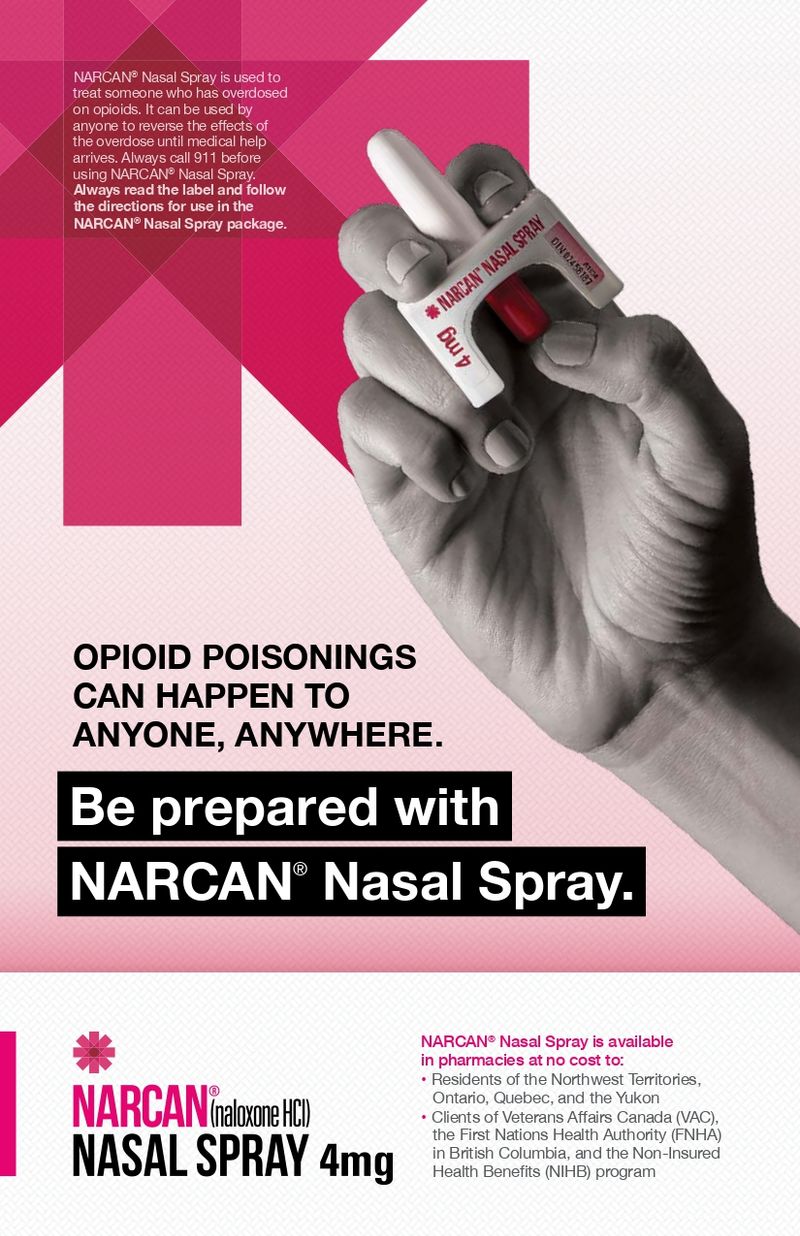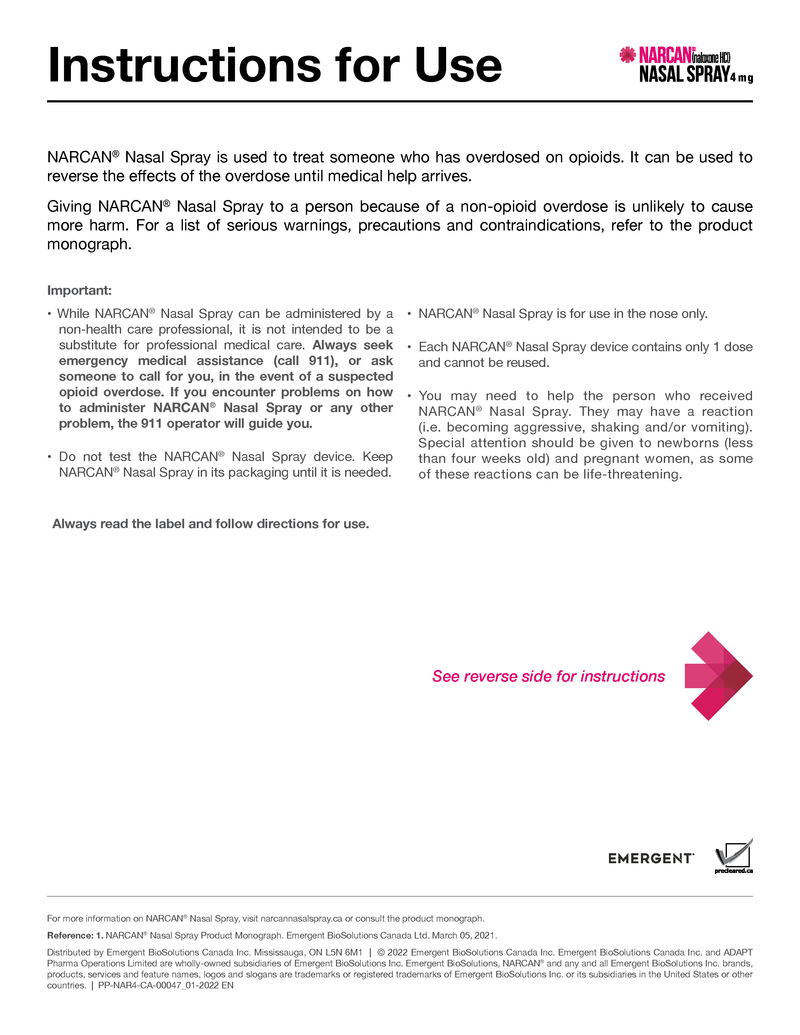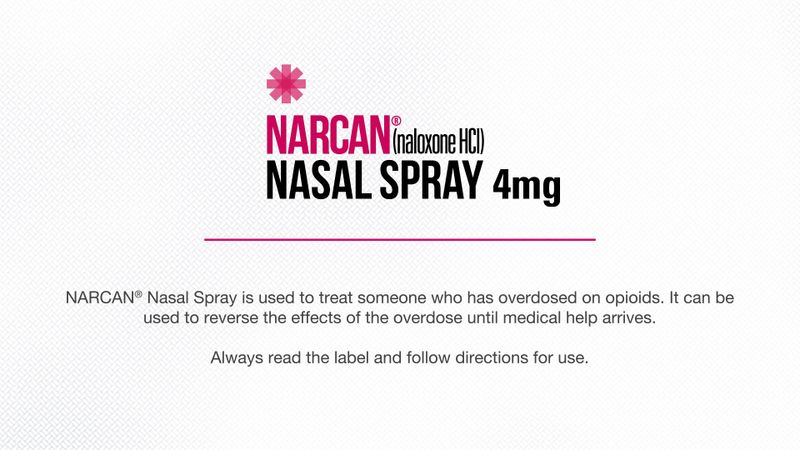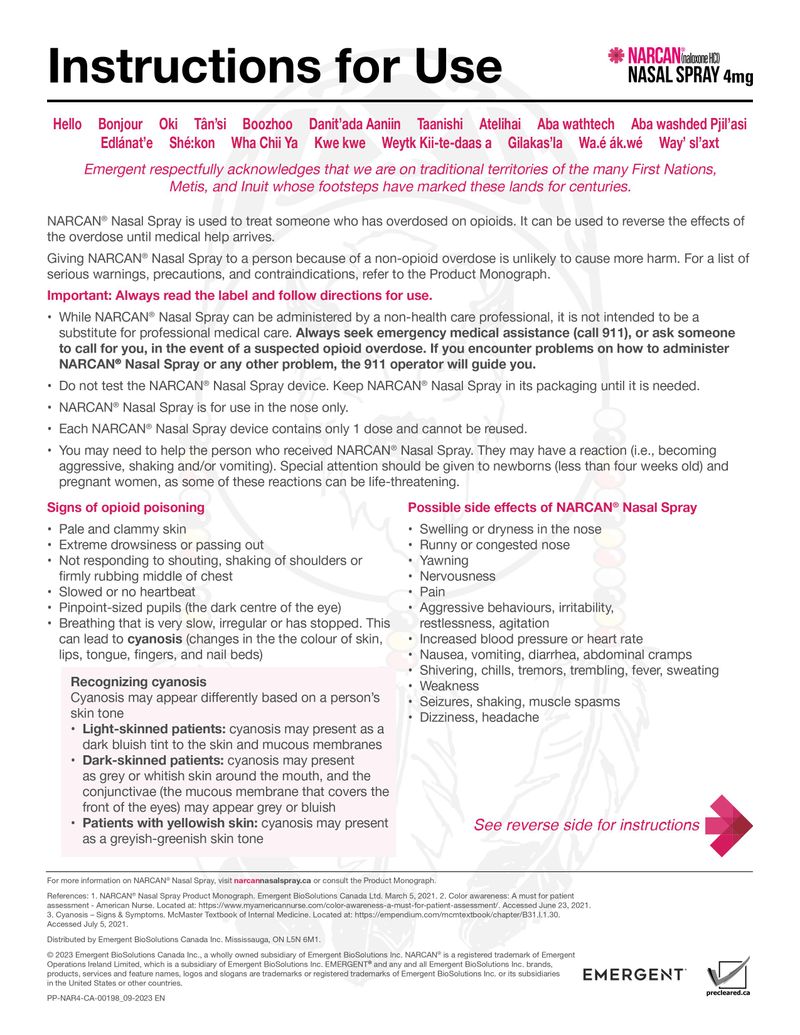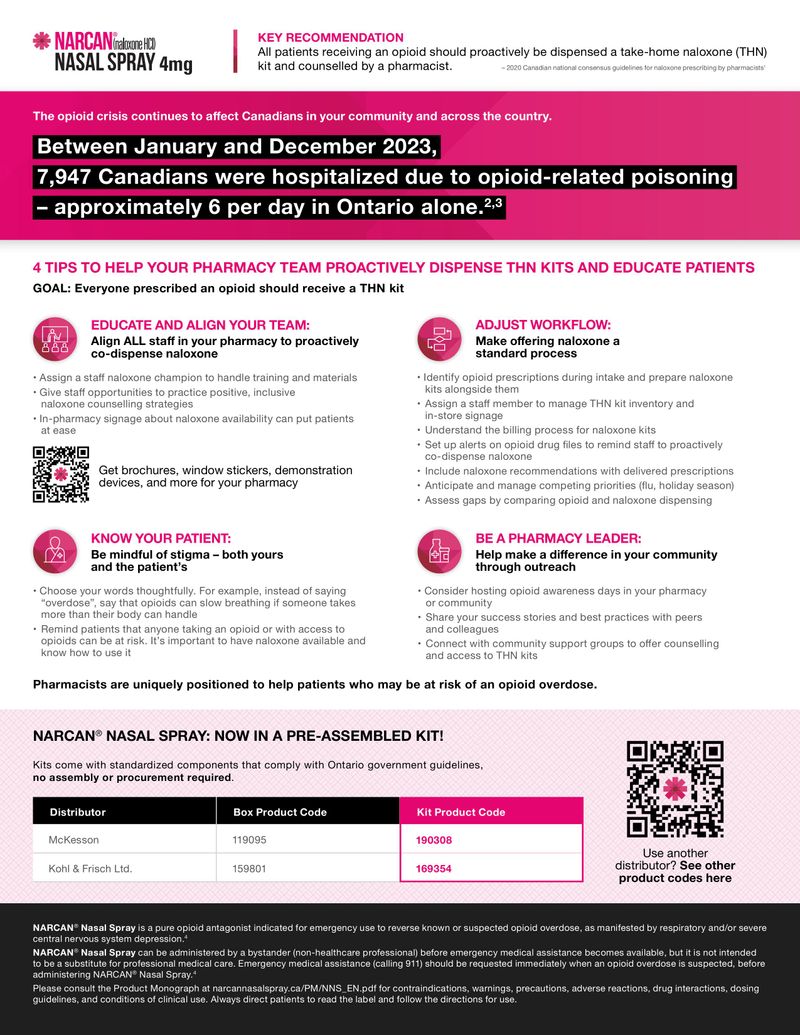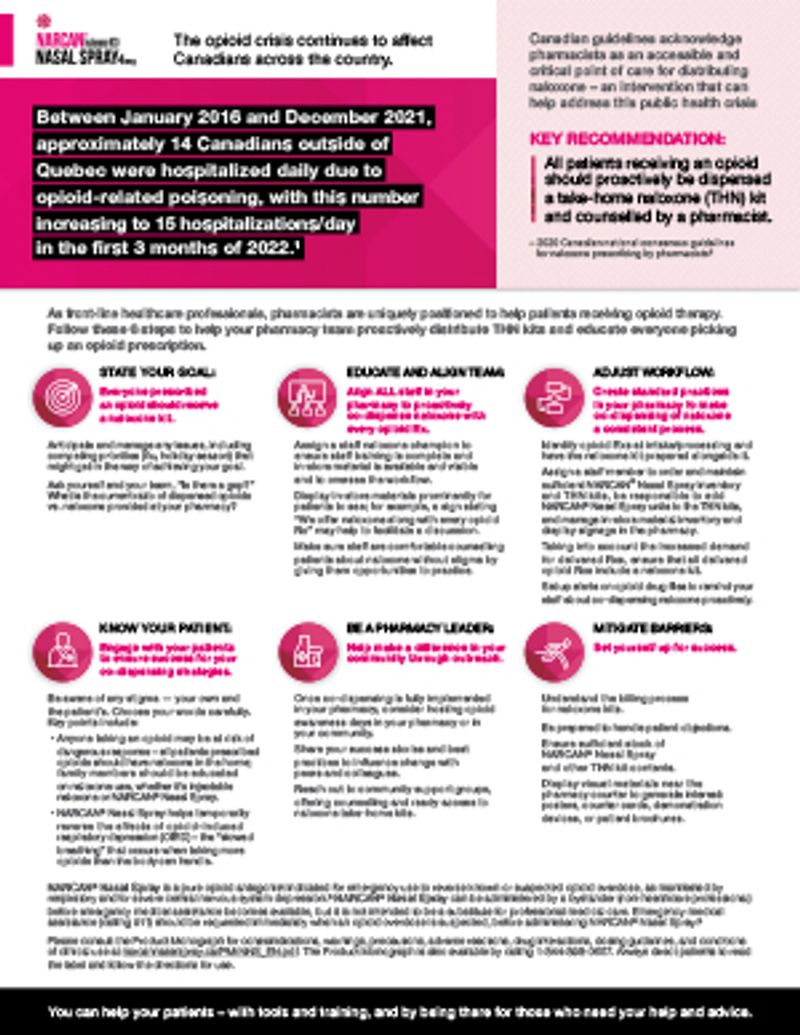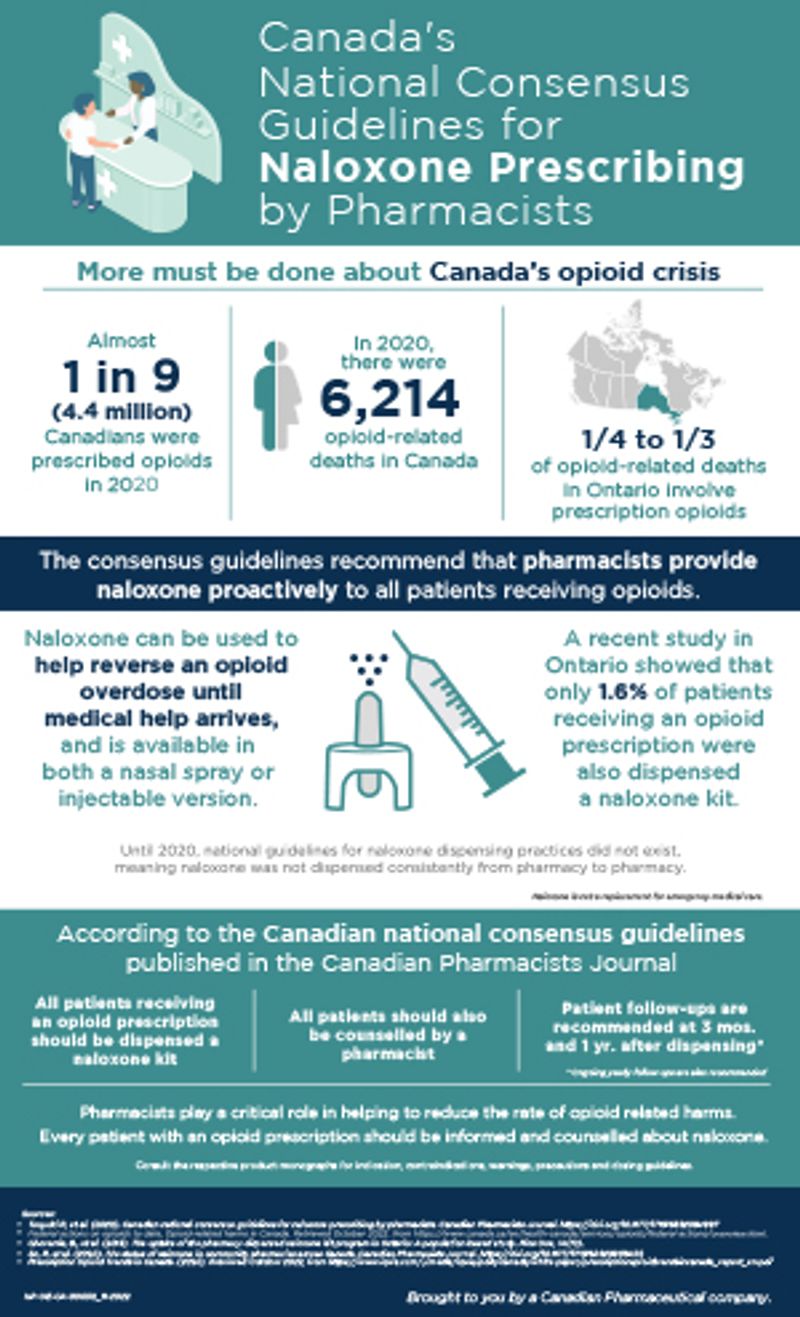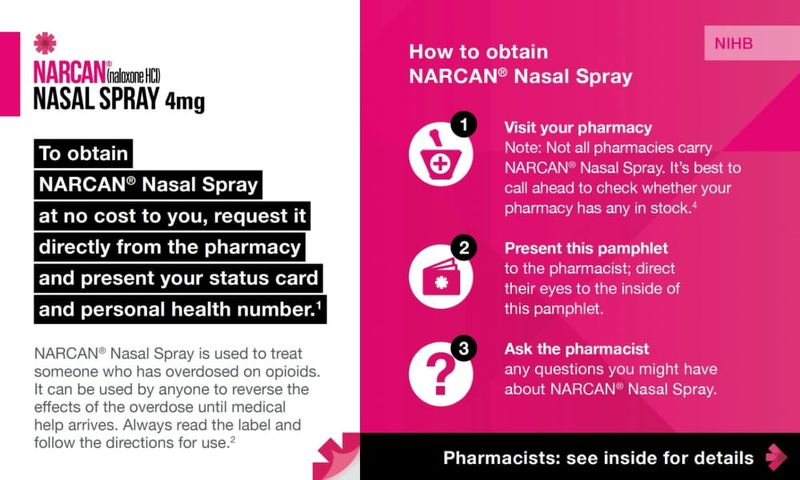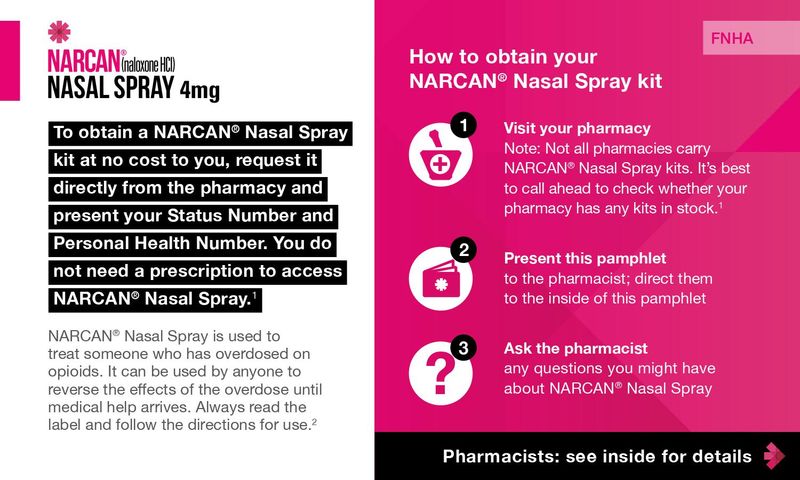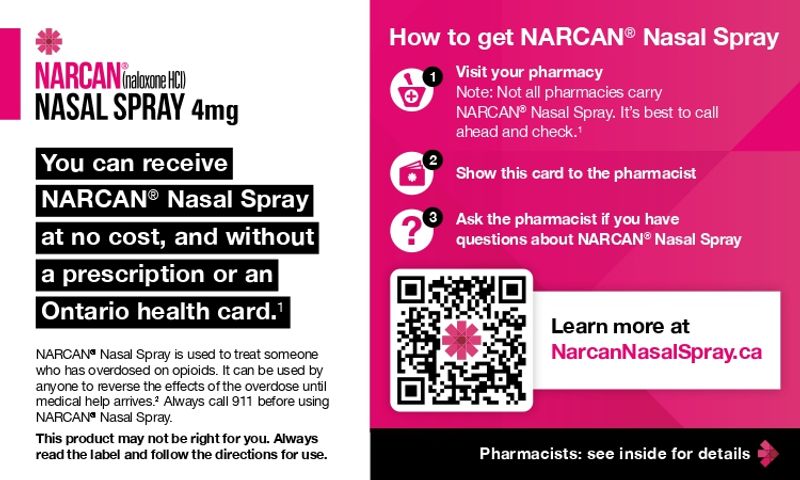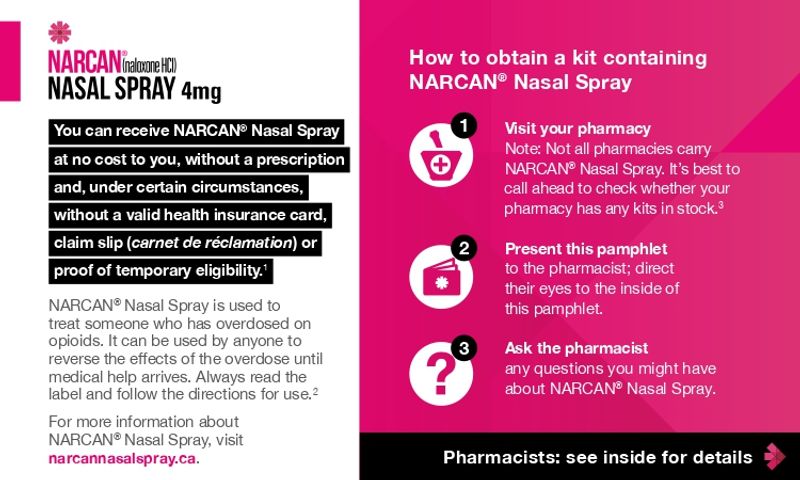As pharmacists, you constantly make decisions throughout the day in the best interest of your patients. Many of these decisions are informed by your patients’ histories and your clinical expertise, but in some cases, you may have to rely on your own assessment. Think back to the last time a patient came into your pharmacy to fill an opioid prescription. Did you decide to offer them NARCAN® Nasal Spray in case of an overdose? What factors contributed to your decision of whether to offer it?
Typically, patient selection guidelines for take-home naloxone kits recommend using key risk factor criteria such as a history of opioid-induced respiratory depression or substance abuse disorder, higher opioid doses or concurrent benzodiazepine use.1-4 In addition, there are other relevant risk factors, like the length of the opioid treatment.1 For example, after one month of opioid use, a patient’s risk of overdose increases by a factor of four; after a year, the risk becomes 14 times as high.1 Similarly, the opioid dosage form can also play a role; patients on long-acting opioids have a two times higher risk of overdose.1
However, risk factor information isn’t always easy to acquire.5 Patients may not be fully forthcoming about their history, especially considering the stigma associated with opioid use, and these risk factors are not necessarily visibly obvious.5 Given these difficulties in determining a patient’s potential risk for accidental opioid poisoning, it is recommended that take-home naloxone kits are distributed to anyone who is prescribed an opioid.5
MAKE NARCAN® NASAL SPRAY AN EASY DECISION
Based on the Canadian national consensus guidelines for naloxone prescribing by pharmacists, a take-home naloxone kit should be offered to all patients receiving an opioid prescription.5 The kits are available in either a nasal spray form, like NARCAN® Nasal Spray, or an injectable form.1 So, the next time a patient comes into your pharmacy to fill an opioid prescription, offer them NARCAN® Nasal Spray.
PP-NAR4-CA-00087_10-2022 EN












